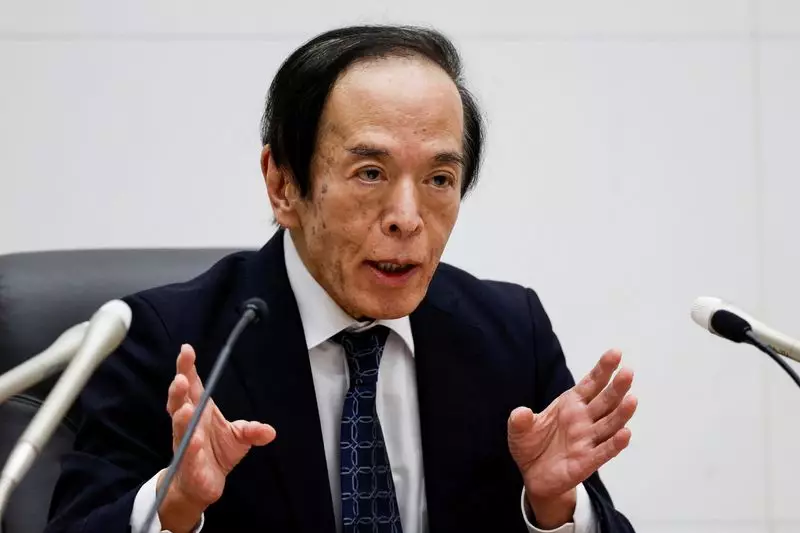The Bank of Japan (BOJ) convenes at a crucial time, with its first policy meeting of the year set against the backdrop of global political changes, notably the inauguration of U.S. President Donald Trump. In light of the BOJ’s potential policy adjustments, this article critically examines expectations for interest rates, inflation forecasts, and market reactions as the bank navigates a complex economic landscape.
The BOJ’s two-day deliberation process culminates in an announcement that can significantly impact both domestic and international markets. After years of maintaining negative interest rates, the BOJ adjusted its short-term policy target, raising it to 0.25% in July of the previous year, signaling a shift towards normalization. This meeting holds particular weight as it not only reflects the central bank’s assessment of domestic economic conditions but also the influence of external factors like the new U.S. administration’s policies. The timing of this meeting raises critical questions about how geopolitical developments might influence monetary decisions.
There seems to be a growing consensus within the BOJ about the conditions that may support another interest rate hike. Japan’s economy exhibits moderate expansion, and inflation rates have remained consistently above the targeted 2% threshold for nearly three years. Such data suggest that the central bank is poised to revise its inflation forecasts upward and may be on the brink of increasing interest rates. Several indicators, particularly in wage negotiations, support this notion. An anticipated program of salary increases could remedy any lingering concerns about persistent stagnation and further solidify the foundation for an interest rate hike.
Signs from various sectors indicate a broader distribution of wage increases, which meets a key criterion for the BOJ to proceed with raising interest rates. This year’s annual wage negotiations are particularly crucial, as increased pay across a variety of businesses could signal sustained economic health, leading the board to contemplate a potential hike to 0.5% during this meeting.
Comments from key BOJ officials have underscored the complexity of the current economic narrative. BOJ Governor Kazuo Ueda and Deputy Governor Ryozo Himino have expressed cautious optimism about wage growth and price stability. They acknowledge the balancing act required to maintain this optimism while also addressing uncertainty surrounding global economic policies, particularly those likely to be pursued by the Trump administration. The looming unpredictability of U.S. tariffs and trade practices continues to cast a shadow over monetary policy considerations in Japan.
While the BOJ grapples with these uncertainties, there is a palpable eagerness to act if the data confirm a sustained trajectory towards the inflation goal. This readiness is critical, as failing to adjust interest rate policy amid rising economic indicators could risk Japan’s global competitiveness.
Despite the favorable domestic conditions for an interest rate increase, there remain forces that could dissuade policymakers. Chief among these is the risk of volatile reactions to new policy announcements from the Trump administration, which could destabilize financial markets. Statements by Deputy Governor Himino reflect the need for caution, as the BOJ continues to evaluate the implications of U.S. policies on Japan’s economic landscape.
The recent rally in global shares has eased some concerns about potential turmoil, allowing BOJ members to focus on maintaining a stable economic environment. However, the decision to hike rates remains sensitive to the evolving global economic climate.
Should the BOJ increase interest rates, market reactions will be closely scrutinized. Currently, there is a disconnect between the U.S. and Japanese interest rates, which puts downward pressure on the yen. A rate hike could lead to short-term appreciation of the currency; however, any lasting strength would depend significantly on subsequent comments from Governor Ueda regarding the central bank’s future policy intentions.
The BOJ is also likely to present a quarterly outlook report following the meeting. This report will be critical in shaping market expectations regarding future growth and inflation forecasts, potentially influencing the pace of further rate adjustments.
Analysts predict that the BOJ may adopt a gradual approach to rate increases, potentially lifting rates twice a year. However, domestic politics could complicate this trajectory, particularly with upcoming upper house elections that could affect Prime Minister Shigeru Ishiba’s administration. The BOJ may prefer to maintain a watchful stance until there is greater clarity on the political landscape post-election.
The decision-making process of the Bank of Japan, particularly in light of the current uncertainty in international political and economic frameworks, remains complex. Future developments in wage negotiations, inflation rates, and U.S. policy will undergo intense scrutiny as they hold significant implications for Japan’s economic prospects.

